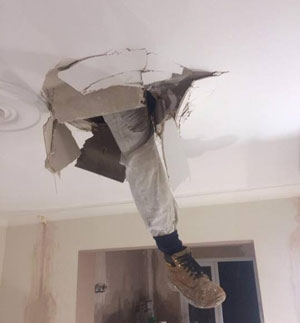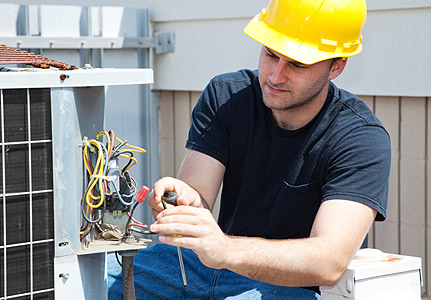As a subcontractor there are several insurance types you will require, such as public liability insurance.
We’ve put together a guide on the various forms of subcontractor insurance available, which ones are required in Australia and a closer look at each in more detail.
We also look at exactly why a subcontractor needs insurance. After all, why pay for something if you don’t even know why you need it!
If you’re just after a public liability quote please follow the link, or read on to check out the guide.
Why Subcontractors Need Insurance
As an employee you typically have a lot of protections in place.
If something goes wrong on the worksite and you cause damage or personal injury to a third party, it will generally be your employer who is responsible financially.
If you suffer an injury yourself you’ll be protected via your employer’s workers compensation, as well as sick leave.
But as a subcontractor you lose many, or all, of these protections depending on a few factors.
So just like your employer would have had, as a subcontractor you need to take out your own insurance to protect yourself.
The two most common forms of subcontractor insurance are public liability and income protection.
Subcontractor Public Liability Insurance
This is by far the most commonly required form of business insurance for subcontractors.
Public liability insurance will respond in the event that you cause property damage or personal injury to a third party.

Some subcontractors believe they will be covered under the insurance of the company hiring them, but this is almost always not the case.
In some cases there may be shared liability. For example you might be a carpenter subcontracting to a builder. There is an incident on site, and a judge finds that the builder was 60% liable because they told you to do something a certain way, and you are 40% liable because you went along with it knowing the issues.
The builder’s public liability insurance would cover their 60% of the claim and the carpenter’s public liability insurance would cover the remaining 40%. If you didn’t have your own insurance, you would have to cover the 40% out of your own pocket.
Because of the serious financial risks involved, most company using subcontractors will require that all subbies have their own public liability insurance in place, and will not be able to work until they have provided a copy of their certificate of currency.
The cost of subcontractors public liability insurance can be very low depending on the type of work you are undertaking.
For a standard trade for example, you might be looking at just $400 a year for the minimum cover. At the other end of the spectrum, if you’re working on a mine site or oil rig your public liability insurance cost will be in the thousands.
Subcontractor Income Protection
As we mentioned earlier, as a subcontractor you won’t have access to sick leave via an employer, and depending on your business structure you might not have access to worker’s compensation.
This leaves you in a very precarious position should you be unable to work due to an injury or illness.
Thankfully income protection insurance can look after subcontractors in this even.
Income protection can cover up to 75% of your income for a period of time whilst you’re unable to work due to illness or injury.
Some companies using subcontractors will require that all subcontractors hold their own income protection insurance, such are the risks involved.
Others forms of business insurance
Whilst public liability and income protection are the only two forms of business insurance that are typically required by a subcontractor, there are other forms of insurance worth considering.
If you are a tradie for example, as a subcontractor you’ll most likely be providing your own tools and equipment.
Your gear won’t be covered by the insurance of the company using your services, so you’ll need to insure your tools yourself.
For more information and advice about what forms of subcontractor insurance you may require, we strongly recommend speaking with a qualified insurance broker.
Licence Requirements
As a subcontractor you’ll be required to hold your own licence for certain occupations or business activities.
For example if you’re a Queensland electrician you’ll have special public liability insurance requirements. Likewise for plumbers in Victoria who also have unique requirements.

Even if the companies you are subcontracting to don’t ask to see your public liability insurance cover, keep in mind that you might still need it for your licence.
The government runs a service by the name of ABLIS which allows you to check if you need a licence for your business. Follow the link to the Australian Business Licence and Information Service.
Using Subcontractors
What if it’s the other way around, and you’re the one using subcontractors?
In this case your own business insurance requirements don’t change greatly, but it is vital that you let your insurance company or broker know that you are using subbies.
Typically the insurer will want to know how much of your revenue is paid to subcontractors, as they see this as part of the overall risk of your business.
Rightly or wrongly, they typically consider that a company that uses a higher percentage of subcontractors will have a higher risk of claiming.
So you need to ensure you inform your insurer of your use of subcontractors, and it’s also vital to ensure that each of the subcontractors you are using also have their own insurance in place.
More Information
For more information about subcontractors insurance requirements, or to get a quote, we recommend speaking with a suitably qualified insurance broker.
Please click here to request a quote or to have a broker contact you.
Remember that as a subcontractor you are responsible for many things that weren’t your problem as an employee. Don’t leave these risks uninsured as you could be badly exposed if anything goes wrong.
Best of luck with your subcontracting work and stay safe!

